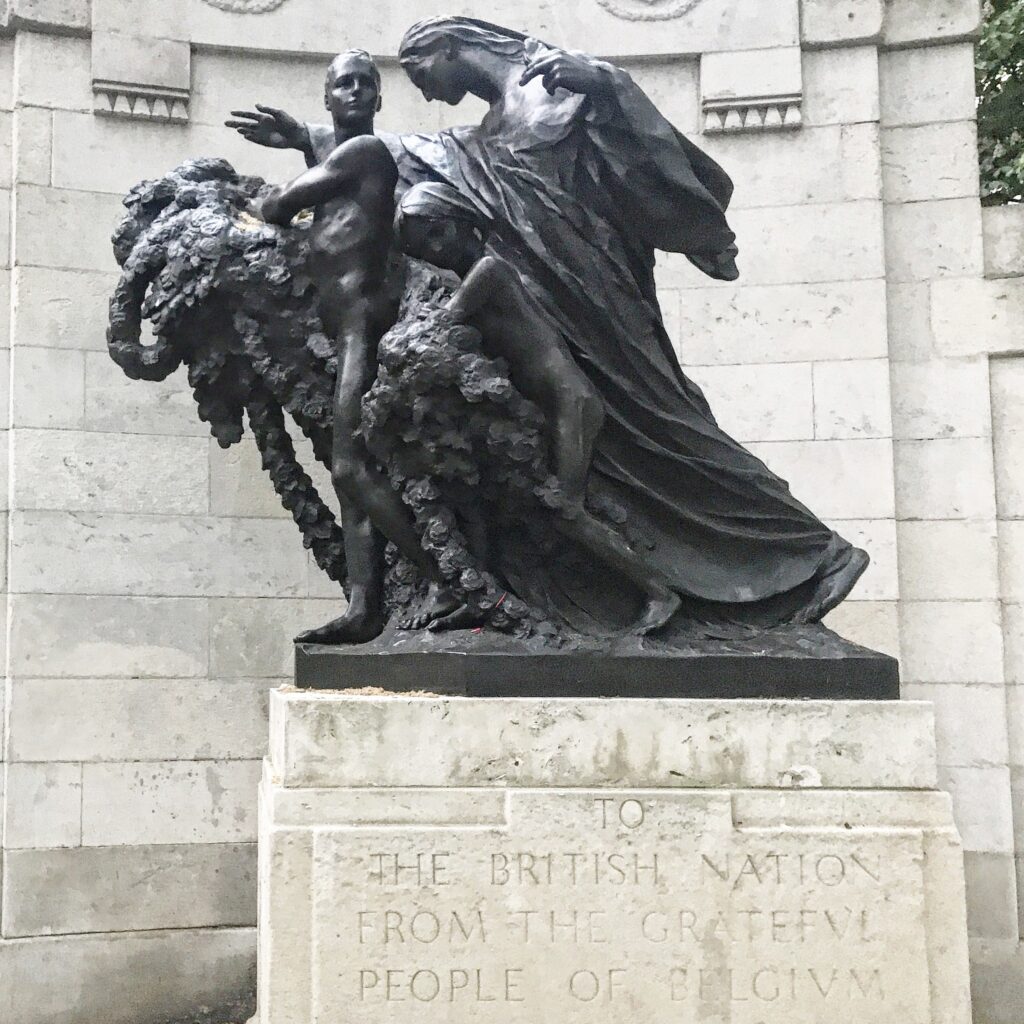
WHAT: The Anglo-Belgian Memorial
WHERE: Victoria Embankment (map)
BY WHOM: Victor Rousseau (and Reginald Blomfield)
WHEN: 1920
The casus belli for the British Empire’s declaration of war on 4 August 1914 was Germany’s violation of Belgian neutrality, the Imperial German forces enacting the Schlieffen Plan to (try to) sweep through Belgium and take the French armies in the flanks and the rear. Thus started World War One.
The resistance of “Plucky Little Belgium” and stories of atrocities committed by the invading troops fuelled anti-German feeling in Britain, but also made the country initially very welcoming to the 250,000 Belgian refugees who made their way across the channel.
This was (and remains) the largest single displacement of population into the UK. Add the refugees to the numbers of Belgian soldiers that were here and something between 3-5% of the entire Belgian nation was resident in Britain in a matter of weeks.
Reception centres were set up (including one at Alexandra Palace) and refugees were billeted in homes across the country. As the war progressed, the initial welcome became more resentful (plus ca change, eh?), and there were even some anti-Belgian riots in 1916.
After the Armistice in November 1918, Lloyd George’s government wanted the incomers back in their home country as quickly as possible (a move supported, it should be said, by the Belgian government who wanted the population back to help rebuild the country), and within 12 months over 90% of the refugees that had been here at the end of the war had returned.
Despite this rather abrupt ending to the relationship, the Belgian government commissioned a memorial to celebrate the support given to the refugees. Called the Anglo-Belgian Memorial, or the Belgian Gratitude Memorial, (and even the Belgian Refugees Memorial, or the Belgian Monument to the British Nation), it was unveiled by Princess Clementine of Belgium on 12 October 1920 (pointedly, the fifth anniversary of the execution of British nurse Edith Cavell).
It comprises a central bronze sculpture by Belgian artist Victor Rousseau (who had himself been a refugee in Britain) of a woman with a boy and girl carrying flowers. The portland stone base and surround is by the architect Reginald Blomfield (who also did the Menin Gate in Ypres, the RAF memorial near the MoD, and Lambeth Bridge). The plinth bears the inscription, “To the British nation from the grateful people of Belgium, 1914–1918″.

